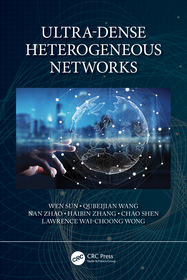
Ultra-Dense Heterogeneous Networks
- Publisher's listprice GBP 43.99
-
21 016 Ft (20 015 Ft + 5% VAT)
The price is estimated because at the time of ordering we do not know what conversion rates will apply to HUF / product currency when the book arrives. In case HUF is weaker, the price increases slightly, in case HUF is stronger, the price goes lower slightly.
- Discount 10% (cc. 2 102 Ft off)
- Discounted price 18 914 Ft (18 014 Ft + 5% VAT)
Subcribe now and take benefit of a favourable price.
Subscribe
21 016 Ft

Availability
Estimated delivery time: In stock at the publisher, but not at Prospero's office. Delivery time approx. 3-5 weeks.
Not in stock at Prospero.
Why don't you give exact delivery time?
Delivery time is estimated on our previous experiences. We give estimations only, because we order from outside Hungary, and the delivery time mainly depends on how quickly the publisher supplies the book. Faster or slower deliveries both happen, but we do our best to supply as quickly as possible.
Product details:
- Edition number 1
- Publisher CRC Press
- Date of Publication 9 October 2024
- ISBN 9780367709518
- Binding Paperback
- No. of pages134 pages
- Size 234x156 mm
- Weight 213 g
- Language English
- Illustrations 40 Illustrations, black & white; 40 Halftones, black & white; 1 Tables, black & white 602
Categories
Short description:
This book will investigate the service and QoE provisioning in ultra-dense heterogeneous networks. It covers definitions, characteristics, requirements, resource management, mobile management, inference management, enabling factors, integration with enabling technologies and future directions and challenges.
MoreLong description:
Driven by the ever-increasing amount of mobile data, cellular networks evolve from small cell network to ultra-dense heterogeneous networks, to provide high system capacity and spectrum efficiency. By bringing base stations (BSs) to the approximate spatial scale and number magnitude, ultra-dense heterogeneous networks would definitely bring unprecedented paradigm changes to the network design. Firstly, along with densification of small cells, inter-cell interference becomes severe and may deteriorate performance of mobile users. Assigning network resources including bandwidth and time slots, while avoiding interference, desires serious consideration. Secondly, the coverage area of BSs becomes small and irregular, resulting in much frequent and complicated handovers when mobile users move around. How to ensure continuous communication and implement effective mobility management, and inter-cell resource allocation and cooperation, remains a challenging issue. Thirdly, such dynamic change in spatial dimension enables us to re-investigate available and ongoing communications and networking techniques, such as massive MIMO, CoMP, millimeter waves (mmWaves), carrier aggregation, full duplex radio, and D2D communications.
To address the aforementioned challenging research issues, this book will investigate the service and QoE provisioning in ultra-dense heterogeneous networks. In particular, firstly we introduce ultra-dense heterogeneous networks by careful definition regarding spatial deployment, generic characteristics, and requirements of ultra-dense heterogeneous networks in order to ensure QoE of mobile users. Secondly, we depict the resource management among small cells in close proximity, mobility management for mobile users (address the super-frequent handovers), and interference management (dealing with the interference due to frequency-reuse in the vicinity). Thirdly, we study the enabling factors, and the integration of ultra-dense heterogeneous networks with enabling technologies, such as massive-MIMO, cloud-RAN, mmWaves, D2D, IoT. Finally, we conclude the book and indicate future directions and challenges.
MoreTable of Contents:
1. Introduction 2. Resource and Interference management 3. Mobility Management 4. Enabling Factors and Emerging Techniques 5. Promising Applications 6. Summary and Future Work
More




